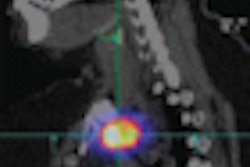
NEW YORK (Reuters Health), Jan 7 - For the most part, contrast-enhanced ultrasound (CE-US) performs as well as contrast-enhanced magnetic resonance imaging (CE-MRI) in monitoring the action of the bradykinin receptor 2 antagonist icatibant in patients with painful knee osteoarthritis, German researchers report.
Senior investigator Dr. Marina Backhaus told Reuters Health that "contrast-enhanced sonography is inexpensive compared to contrast-enhanced MRI, with the same high resolution in the evaluation of activity in synovial processes."
Backhaus of University Hospital, Berlin, and colleagues used both of these approaches and B-mode, power Doppler ultrasound (PD-US) to prospectively evaluate 36 patients who had been randomized to three injections of 500 mcg or 2,000 mcg of icatibant or placebo.
Their findings are published in the January issue of Annals of the Rheumatic Diseases.
At baseline, compared to the active treatment groups, the placebo group demonstrated more effusion in the superior and lateral recess with CE-US as well as with PD-US in the lateral recess.
Follow-up at three weeks showed that the visual analogue pain scores improved significantly in all three groups, and there were no significant differences in acetaminophen intake.
In the placebo group, MRI revealed a significant improvement in synovial hypertrophy in the superior recess and a significant improvement in effusion in the lateral recess in the high-dose icatibant group. There were no other significant differences in ultrasound or MRI parameters.
The researchers found that although only CE-MRI of the lateral recess was able to demonstrate a significant improvement in the 2,000 mcg icatibant group, "this might be an accidental finding."
Summing up, Backhaus noted that "echocontrast-enhanced sonography is helpful in the differentiation and evaluation inflammatory joint processes. It is especially of interest in testing the efficacy of new antirheumatic drugs."
"Further studies," she concluded, "are necessary to evaluate the new technique in assessment of joint diseases."
Ann Rheum Dis 2009;68:75-83.
Last Updated: 2009-01-05 18:20:39 -0400 (Reuters Health)
Related Reading
AAOS study: MRI overused for knee osteoarthritis, March 6, 2008
Copyright © 2009 Reuters Limited. All rights reserved. Republication or redistribution of Reuters content, including by framing or similar means, is expressly prohibited without the prior written consent of Reuters. Reuters shall not be liable for any errors or delays in the content, or for any actions taken in reliance thereon. Reuters and the Reuters sphere logo are registered trademarks and trademarks of the Reuters group of companies around the world.

















